TERRA X
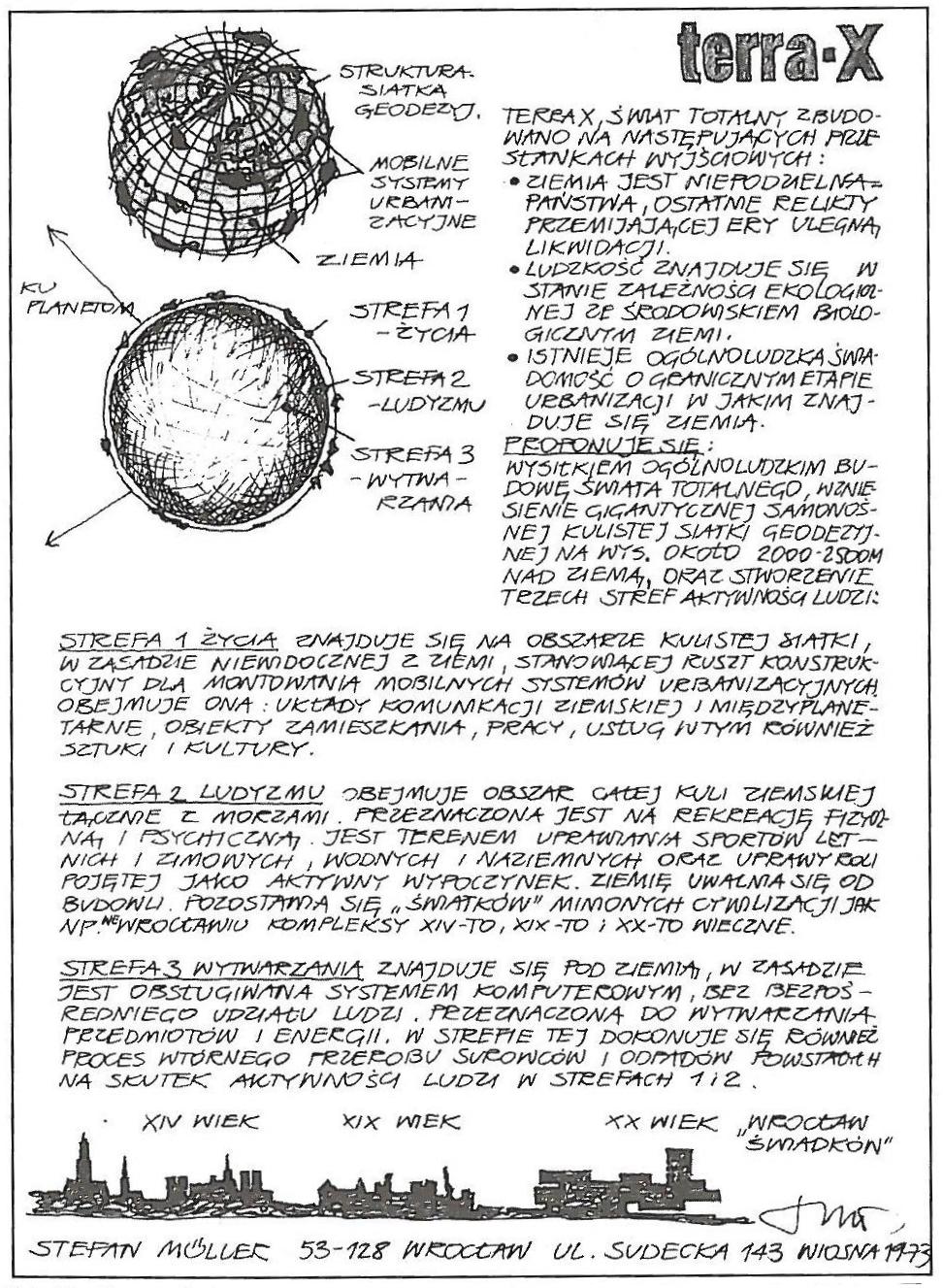
Terra X – an intentional escape from Planet Earth
Jerzy Ludwiński
I am still going to insist that you answer this question: Do you seriously forward the Terra X project?
Stefan Müller
Very seriously indeed.
Jerzy Ludwiński
If so, do you find it possible, technically and organisationally, to assemble the construction?
Stefan Müller
Paradoxical though it may seem, there are technological methods and organisational strategies available today to build Terra X. What is going to take years is the solution of political, social, and ethical issues necessary for the project to succeed. In our time – possibly for the first time in the history of humanity – political objectives, which have always been an architecture-triggering factor, are aimed at development of those domains of human activity which do not directly contribute to creation of architecture. For instance, if the funds allocated to nuclear arms or conquering the universe would be relocated to the Terra X project, its implementation would be entirely possible. There are numerous examples in history when similar or even relatively greater financial means were used to erect architectural structures. The labour and social commitment devoted to the creation of monumental Egyptian pyramids or the Great Wall of China were by no means smaller than those Terra X would take in 2000.
[…]
Jerzy Ludwiński
I do not seem to be able to find a definite architectural form in your work. The form has always been a component of the artwork, including works of architecture. How is this problem defined in Terra X?
Stefan Müller
Your question is not that easy to answer. I do realise that architectural forms have been serving a number of different functions, but it seems increasingly clear to me that intentional development of new forms and shapes, especially in architecture for the future, is pointless. The number of natural forms and man-made material products, the ones that are already here and the ones that will have to appear as a result of extra-architectural and extra-technological activities, such as telecommunication networks, industrial or energetic devices, provokes specific aesthetic reactions. Bringing to life new forms and shapes in an era when human beings have reached the Moon, while at the same time social and individual objectives are doubtful in terms of the entire humanity, in the general crisis of beliefs and ethical principles, seems to be failing to fulfil the function commonly associated with form. The gap between technological explosion and individual beings, the impossibility to comprehend human behaviours, or human souls which have never seized to be subjected to the same age-old emotions such as love, hatred, being active or passive in life, good and evil… indicate that myths, religions and magic will keep returning. This is why I have not suggested any architectural form. I believe that the present day forces abstract emotions on people, it forces them to dream of transgressing/trespassing matter. These problems cannot be dealt with by defining a form right now. Some ambiguity would be better… I don’t know… But not by formal action anymore.1
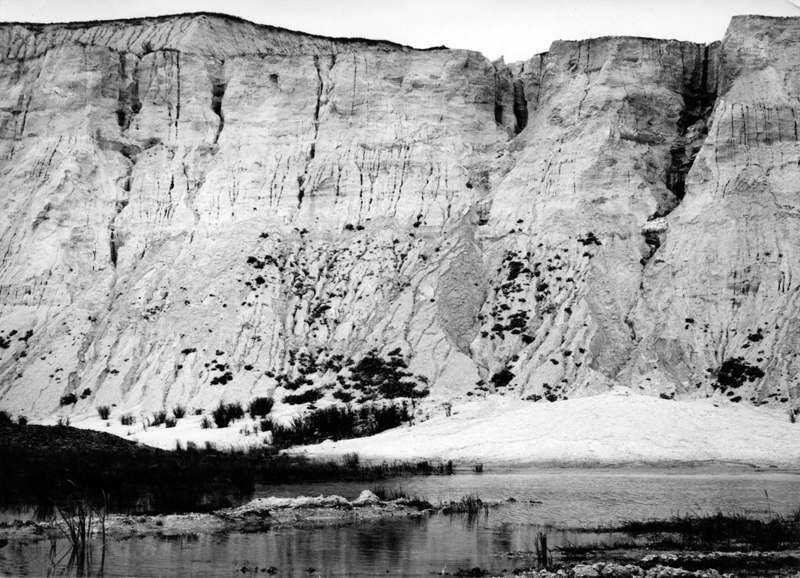
In 1973, Stefan Müller, a Wrocław-based architect, urban planner and theoretician of architecture, developed the concept of Terra X – an idea of total urbanisation of the world. The project consisted in constructing a self-supporting cylindrical geodetic network suspended in space at the altitude of 2,000-2,500 metres above the Earth. It was where humanity would soon move.
In Müller’s project, the total world would be constructed of three zones. The gigantic cylindrical structure would provide a construction grid for “mobile urban systems.” This was the “life zone” with entire infrastructure necessary to live and work. The surface of the Earth would be converted into a “ludic/entertainment zone”, used exclusively for recreation and leisure. The third zone – “production zone” was to be located underground, where energy and all products required to live would be manufactured automatically, without human involvement, and where resources and waste generated in two other zones would be processed.
Terra X presupposed revolution. Another milestone in the history of humankind à rebours with human beings taking heed, as it were, from their ancestors living in trees and venturing down to earth only in search of food. The key element in this analogy, according to Müller, is still the experience gained over the five millions years of evolution. If he suggested an escape, it was because he believed that biological and ecological environment inevitably needed protection for the humankind to prevail.2
The architect’s views were surely influenced by two factors of great significance at the time: space exploration and ecological awareness. The ‘colonisation’ of space, initiated in the late 1950s, produced measurable effects in 1969 when the first humans stepped on the Moon. The potential of observing the Earth from the outside triggered new possibilities and expectations related to the universe. On the other hand, the late 1960s and the early 1970s saw emerging environmental movements, calling for environmental protection and rational use of natural resources. These factors also provided a foundation for Terra. International Exhibition of Intentional Architecture, by which Müller wished to present his ideas to international audiences as well as to set up a platform for the discussion of architectural thought.
There were actually two exhibitions. Terra 1. International Exhibition of Intentional Architecture was staged in 1975 as part of the AICA International Congress in Warsaw, titled Art, Science and Ethnology as Developmental Factors in our Time. It was hosted by the Museum of Architecture in Wrocław between 14th September and 12th October. Terra 2. International Exhibition of Intentional Architecture took place in the same venue between 6th June and 6th September 1981, and accompanied the 14th World Congress of the International Union of Architects.
Both shows were arranged in a similar way. Müller wanted them to contain a spectrum of ideas and conceptions as wide as possible. Invitations were sent out to architects, artists, and scientists to submit drawings, texts, photographs, or architectural models.
The leading motif for Terra 1 was “the global tendency to treat the Earth as an indivisible material on (in, above) which specific holistic urbanisation processes are executed.”3 The very subtitle, “intentional architecture”, suggested that the exhibition would not be a display of finished projects or functional architectural designs, but a confrontation of architects’ or artists’ intentions, revealing their visions as well as prognostic, futurologist or even fantastic and utopian plans.
In Terra 2, Müller put the following questions to the participants: “Which areas of material goods (or ideas) are covered by the concept of present-day architecture? What are the associations between natural or biological environment and urbanisation processes? What transformations in the living and material world are necessary to people?”4
The total number of participants exhibiting at both shows amounted to nearly two hundred. They included architects and visual artists, though the second exhibition also encompassed works by economists, sociologists, historians, anthropologists, physicists, and writers. Submitted pieces came from such architects as Renzo Piano, Richard Rogers, Aldo Rossi, Oskar Hansen, Przemysław Szafer, Arata Isozaki, Jan Głuszak, the Archiclique group, Kazimierz Wejchert, Henryk Buszko, but also from a multitude of visual artists, including Jerzy Rosołowicz, Natalia LL, Jan Chwałczyk, Andrzej Lachowicz, Marian Bogusz, Włodzimierz Borowski, Andrzej Dłużniewski, Zdzisław Jurkiewicz, and Andrzej Pawłowski.
Under the rules drawn up for the shows, all submitted works were to be put on display with no preliminary selection. In consequence, both events turned out to be unprecedented overviews of ideas as well as futurologist and visionary designs from all over the world. The works were widely diverse, from attempts at predicting the future to futurologists visions and architectural fantasies, and they addressed theoretical and practical facets of spatial planning, urban planning, architecture and industrial design.5 Anda Rottenberg wrote:
There was no expectation whatsoever that a new concept of building will emerge: a house, hotel, factory, or airport. No plans for new developments or cities were awaited. The objective was to capture and to expand the idea of architecture itself, and to redefine related concepts. The exhibition raised architecture to the level of philosophical and aesthetic discourse, unaffected by mundane practical determinants, transforming it into a place to live and a way of life, a form of human and the world’s existence.6
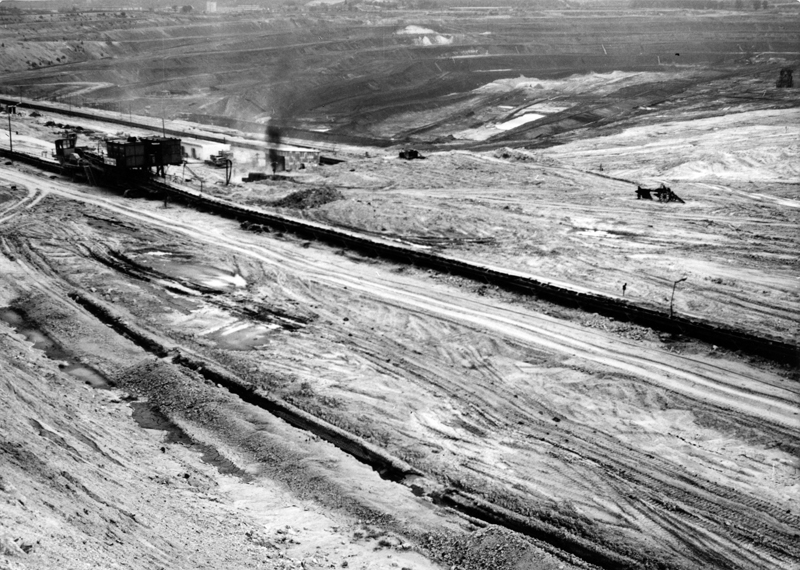
Terra X, as well as the whole project initiated by Müller, did not take on a tangible physical shape; it was there as an idea, or an intention. A space was created for the exchange of purely conceptual notions. The term he coined, ‘intentional architecture’, contained a utopian component and stood first of all for pure architecture, free of all material limitations, reduced to ideas and thoughts. The resemblance to conceptual art is crucial here and, nomen omen, intentional.
In Poland, conceptual art began to emerge at the turn of the 1960s and 70s. This essentially dynamic moment would at times cause revaluation and formulation of new notions and definitions of art, artist, or institution. The person that intuited the process, defined and named it was Jerzy Ludwiński, who came to live in Wrocław in 1966. His texts and opinions on art were consistently referring to the idea of creative process. According to Ludwiński, the term represented the very essence of art, and was superior to the object of art. Ludwiński rendered these notions into models of institutional artistic activity revolving around debating art. His analyses, ideas and initiatives exerted genuine influence on Polish art at the turn of the 1960s and 70s, in an era “when everything – as he noted himself – was changing with astonishing speed.”7
The dynamics of activities set going by the critic was soon reflected in the whole country. His artistic sensibility, open-mindedness and superb orientation led to the formulation of an environment around a conceptual core. Ludwiński acted as consultant introducing new forms of action. His contributions to discussion and theoretical essays were critical, strongly appealing, and hastened the arrival of specific artistic attitudes.
The strong artistic circle that grew around Ludwiński in Wrocław embraced the most important neo-avant-garde artists in Poland. Stefan Müller was a member of that group. The relationship between the critic and the architect was a friendly one, but there was also a polemic touch to it. Müller recalled: “When Jurek [Jerzy Lewczyński – translator’s note] came to Wrocław invited by Jan Chwałczyk, it turned out that I – though not only I – was on the same wavelength as he. We hit it off at once. It is difficult or, actually, impossible to explain why we got on so well. […] We soon began to see each other on a regular basis. Jurek did not have a place of his own so I put him up sometimes; we drove together to open-air sessions, symposiums, and suchlike. We grew close during these travels across Lower Silesia. […] Of course, when we met prominent artists, or when we got inebriated, we would argue about the matters we cared most about, the meaning of art and what art is. In the morning, everyone drew some conclusions from that gibberish. For example, a sentence, a turn of phrase that appeared new or different to me, one I disagreed with, those were the things I could not overestimate. I felt I had to – and I do not think I was the only one – correct my established views, or at least to think them over. And Jurek was always close by, as it were; he started the fire, and then he withdrew […].”8
Müller’s relation with Ludwiński, or rather with the circle of conceptual artists, directly affected his approach to architecture. One of his first important theoretical essays, in which he discussed all art from the earliest times to the present day,9 questioned in fact the ideas discussed by Ludwiński in his Sztuka w epoce postartystycznej [Art in Post-Artistic Times]. This “conceptual bite”10 played a decisive part in the process of composing the concept of Terra X, and its later manifestations in the form of the international shows Terra 1 and Terra 2. In order to retrace Müller’s path to the idea of total urbanisation of the world three events should be mentioned: the 1970 Plastic Symposium in Wrocław, the Ziemia Zgorzelecka open air session and the action Kontrapunkt.
Officially, the symposium was organised to celebrate the 25th anniversary of the “return of the Western and Southern Territories to the Motherland”, an initiative by the Wrocław Lovers Association. Its organisers expected a confrontation of various visual attitudes that was eventually to lead to creation of outstanding artworks in the urban fabric. The works reflecting the explorations in the field of present-day art were supposed to form a new spatial/urban structure of the city.
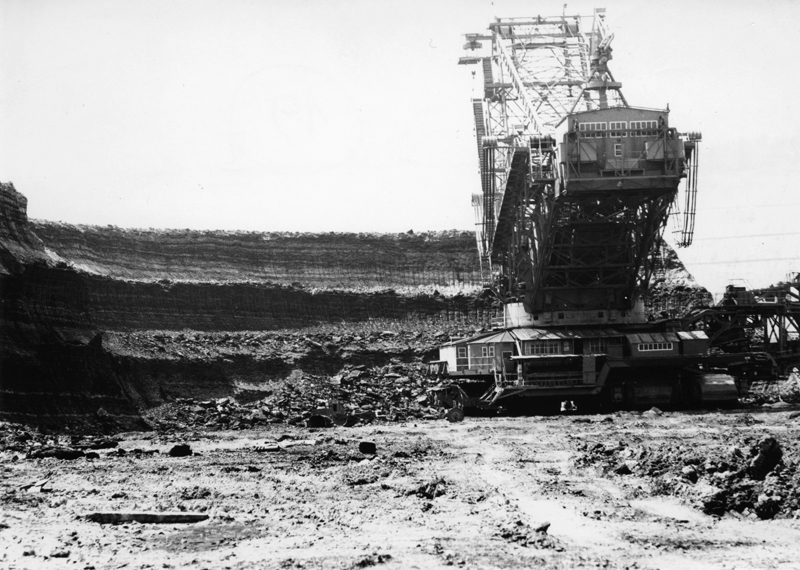
The first session (6th-8th February 1970) included proceedings and discussions by critics, artists and organisers, defining the programme and the scope of the event. The exhibition of submitted designs was opened in the Museum of Architecture one month later. The third stage was to consist in their execution.
More than 40 venues were chosen across the city in which the works were to be manufactured in cooperation with Wrocław-based industrial plants. Interestingly, only about a dozen submitted designs could be categorised as conceptual art. A huge majority of them were intended to be produced.
Eventually, only three project were carried out, chiefly due to the efforts made by the Galeria pod Mona Lisą run by Ludwiński: Henryk Stażewski’s Kompozycja pionowa nieograniczona [Unlimited Vertical Composition] (9th May 1970), Andrzej Wojciechowski and Mieczysław Zdanowicz’s Wieża radości [Tower of Joy] (23rd July 1970) and Jerzy Bereś’s Arena (1972). Nonetheless, the symposium came to be regarded as a symbolic manifestation of the emerging conceptual art and was seen as a breakthrough moment in Polish art history already in the 1970s. The structure of the event, its interdisciplinary and polemical character provided direct inspiration for the Terra 1 exhibition. One could venture to say that Müller’s suggestion involved an attempt to render the event grounded in conceptual approach to art into the language of architecture. Before that happened, Müller got an invitation to participate in an open-air session.
The open-air session Ziemia Zgorzelecka was the last event initiated by the Galeria pod Mona Lisą. It took place in Opolno-Zdrój at the foot of the Izera Mountains in July 1971, a few kilometres away from open-pit coal mines. The choice of location was by no means a random one. The mine served as an instance of the encounter of nature in an almost primeval form and the new nature, a product of human industrial and technological activity. At the same time, it created a rather apt picture of how natural resources are tapped, and the ensuing destruction of the original landscape.
The meeting was titled Science and art in the process of environmental protection and was to involve a confrontation of artistic and scientific attitudes, aimed at reflection on the possibilities of planning civilisation-driven changes in accordance with natural processes of biological transformations. The initiators of the session wrote that art itself “serves a very important function in the process of challenging stereotypical thinking.”11 Naturally, the organisers did not expect the participants to produce durable objects; they much more hoped for artistic projects in the broad sense, addressing the perceptible acceleration of civilizational processes, overproduction of man-made items (including waste products) or other negative factors related to industrialisation.
During the meeting, Stefan Müller gave a lecture An attempt to assess aesthetically formal dependences between natural environment and introduced elements of contemporary civilisation. His paper was based on an analysis of the associations between natural environment and components of contemporary civilisation that were being introduced to it. He actually called pro-environmental attitudes a neo-romantic trend resulting from the growing crisis of contemporary cities. He believed that the reasons behind this included the changes that had been taking place in urban agglomerations in the previous years, as well as the discrepancies between the necessities of social life organisation and political purposes.
Müller wrote: “Most spatial and functional developments in European cities date back to the Middle Ages; much older cities were usually largely rebuilt at that time, while newer cities, considering their crucial elements that have survived till our time, failed to produce any significant spatial and functional values. Since the early 19th century we have been observing vigorous progression of cities, which takes into account the basic, primitive social needs. It is not the lack of contemporary urban conceptions as these are rather frequent, but the lack of complex realisations that have precipitated well-known crises of today’s cities. The unsuccessful – in sociological terms – development of Brasilia, a city erected on virgin land, became an argument against this kind of enterprise.”12 Later on, he adds: “The development of medieval cities, their perfect sociological and technological models, which worked well up till the 18th century, resulted from common political and social objectives of the societies of the time where problems related to prestige, defence and social life were enclosed within the city walls. These objectives are currently being achieved via technological progress, the race in industrial production and, lately, the numerous attempts at conquering the universe. A highly advanced technological development leads to a potential threat to the balance between natural environment and newly introduced elements of civilisation.”13 However, these changes and processes heightened general social awareness that began to strive to work out some healthy relations between natural environment and civilisation. In history, the connections between architecture and environment were influenced by technological and communication difficulties. Today, when possibilities are in fact unlimited, what remains is the resistance of psychological and cultural nature.
In his diagnoses of potential architectural processes, Müller cited his tutor, Andrzej Frydecki. He claimed that there were two possible ways for architecture. The first was the “museum sphere” which would include “natural environment, recreational areas, historical centres, and regions of natural biochemical rotation;” the other was the “technological sphere, (…) resulting from current technological and social development, encompassing all other architectural forms.”14 In the museum sphere the natural environment would be the core element, and all civilizational changes would be subordinate to it. The technological sphere, on the other hand, would have no aesthetic and technological barriers, and its sole objective would be to cater for social needs.
These reflections served as the basis for Müller’s Terra X project. Its premises were put down on paper in the spring of 1973 in the form of a short text – a draft. At the same time, Jan Chwałczyk carried out Kontrapunkt (Counterpoint), one of the pioneer mail art projects in Poland. For two years, he sent a questionnaire regarding the condition of art and its possible developments, and the replies amounted to a substantial collection of materials submitted by 68 artists from 18 countries. The project culminated in two exhibitions (BWA Wrocław, Teatr Studio in Warsaw) and a publication. The concept of Terra X was among the obtained propositions, and it was the first time it had appeared in print.
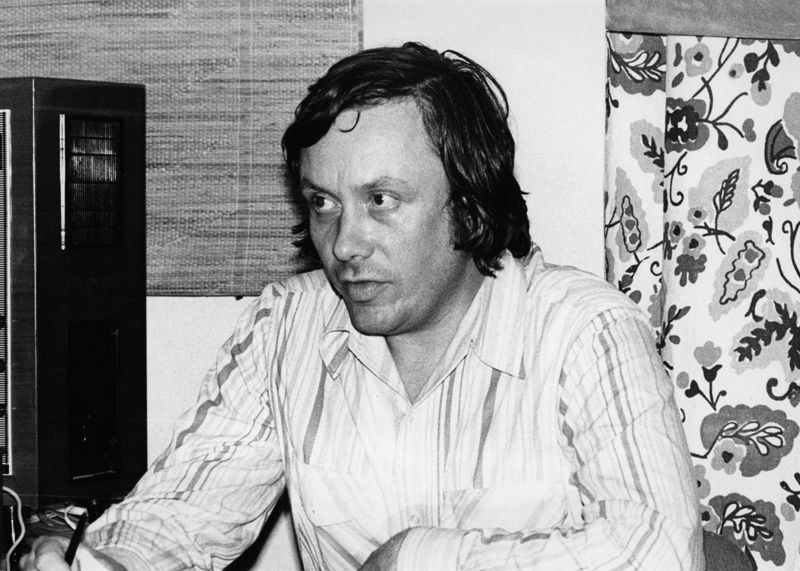
Stefan Müller, copyright by Wrocław Contemporary Museum
Stefan Müller never claimed that the Earth should be abandoned. Terra X was not to severe relation with the planet. Even its position at the altitude prescribed by its author was meant to allow eye contact with the Earth. Terra X was an urban concept that resulted from fascination with nature and the possibilities opened by conceptual thought. Müller often emphasised that he became an architect by a coincident, and his major interest is nature. For him, architecture is a product of life, changing as people’s needs change. The Terra X project was first and foremost about the “very spot where the material aspect meets the immaterial aspect, where nature meets what man adds to it.”15
The concept of intentional architecture, forwarded by the architect, was an outcome of its time – the turn of the 1960s and 70s, an era of futurologist and countercultural visions. Terra was to serve the function of a testing ground for the newest architecture, revolving around the relations between nature and man-made products, and the global approach to the Earth as the material in urban processes. Performing an analysis of the architecture in the period of the Polish People’s Republic through the prism of futurology, Emilia Kiecko writes: “His words seem to suggest the most important conclusion was that humanity is dependent on its environment which must be kept in a condition as good as possible. Therefore, the move to Terra X could be considered an act of «stepping aside» and «cleaning up» after oneself.”16 This specific ‘exodus’ has a touch of conceptual romanticism to it. This is a collision of pragmatism and utopia. Importantly, from the very beginning of the process of designing Terra X as a manifestation of intentional architecture, Müller presumed it was possible to be made, even though he added straight away that this would happen in indefinite future.
Jerzy Ludwiński
Surprisingly, you never mention the universe in your designs. Urbanisation of extraterrestrial planets seems perfectly possible these days?
Stefan Müller
There is no doubt that the conquest of the universe made by people so far, and farther possibilities of exploring it have exerted a profound impact on human mind, on human existence. My interpretation of these discoveries that keep fascinating people is Terra X. It is an apparent paradox that the chance to observe via television the first steps taken by Neil Armstrong on the Moon has made us realise, much stronger than before, our relations with the Earth. As we watch life evolving on the Earth, as we spoke before, the descent of the primeval creature from the tree to the ground, living in caves, huts, houses, tower blocks, leads to men leaving the Earth again in a closed circle. But human escape from the Earth is nothing but superficial. The potential ‘exodus’ of the humankind from our planet would be synonymous with the revolutionary transformation of man – in other words, it would be the end of humankind. But this is out of the question. The unquestionable and possibly most important thing we get from the fact that we are able to take a look at the Earth from outside, as it were – or so it seems too me – are not new technological or economic discoveries, but the crucial revaluation of human consciousness, confirmed from the lunar perspective, that the Earth is simply an indivisible and not too spacious home.17
1 “Architektura intencjonalna. Terra X. Rozmowa z Jerzym Ludwińskim”, in J. Gromadzka, P. Jaszczuka (eds.) Stefan Müller. Wynurzenia, czyli NIC, Wrocław, Muzeum Architektury, 2010, pp. 174-175.
2 “Architektura intencjonalna”, p. 176.
3 S. Müller, “Terra 1. Międzynarodowa wystawa architektury intencjonalnej”, Projekt, no. 4, 1975, pp. 45-51.
4 S. Müller, “Terra 2. Międzynarodowa wystawa architektury intencjonalnej”, Architektura, no. 6, 1984, p. 14.
5 J. Gromadzka, Wstęp, in J. Gromadzka, P. Jaszczuka (eds.) Stefan Müller, pp. 5-10.
6 A. Rottenberg, Konceptualne ukąszenie, in J. Gromadzka, P. Jaszczuka (eds.) Stefan Müller, p. 13.
7 J. Ludwiński, Jak znalazłem się we Wrocławiu, in J. Hanusek (ed.), Epoka błękitu, Kraków, Otwarta Pracownia, 2009, p. 305.
8 S. Müller, [untitled], Wrocław, 5th March 2011. Transcript sent to P. Lisowski.
9 S. Müller, Sztuka w okresie po-postartystycznym, in J. Gromadzka, P. Jaszczuka (eds.) Stefan Müller, pp. 137-140. The paper was first presented at the Institute of the History of Architecture, Art and Technology, Wrocław Polytechnic, on 8th January 1971.
10 A. Rottenberg, Konceptualne ukąszenie.
11 J. Chwałczyk, A. Dzieduszycki, J. Ludwiński, “Założenia programowe pleneru – spotkania artystów, naukowców i teoretyków sztuki Ziemia Zgorzelecka 71”, in Plener Ziemia Zgorzelecka – 1971. Nauka i sztuka w procesie ochrony naturalnego środowiska człowieka, session materials, Opolno-Zdrój, 1971, no page numbers.
12 S. Müller, Próba oceny estetycznej zależności formalnych, jakie zachodzą pomiędzy środowiskiem naturalnym a wprowadzonymi elementami współczesnej cywilizacji, in Plener Ziemia Zgorzelecka – 1971.
13 S. Müller, Próba oceny estetycznej zależności formalnych.
14 S. Müller, Próba oceny estetycznej zależności formalnych.
15 “Terra. Ze Stefanem Müllerem rozmawiają Michał Duda i Roman Rutkowski”, Autoportret, no.2, 2011, pp. 42-49.
16 E. Kiecko, Przyszłość do zbudowania. Futurologia i architektura w PRL, Warszawa, Fundacja Nowej Kultury Bęc Zmiana, 2018, p. 356.
17 “Architektura intencjonalna”, pp. 177-179.